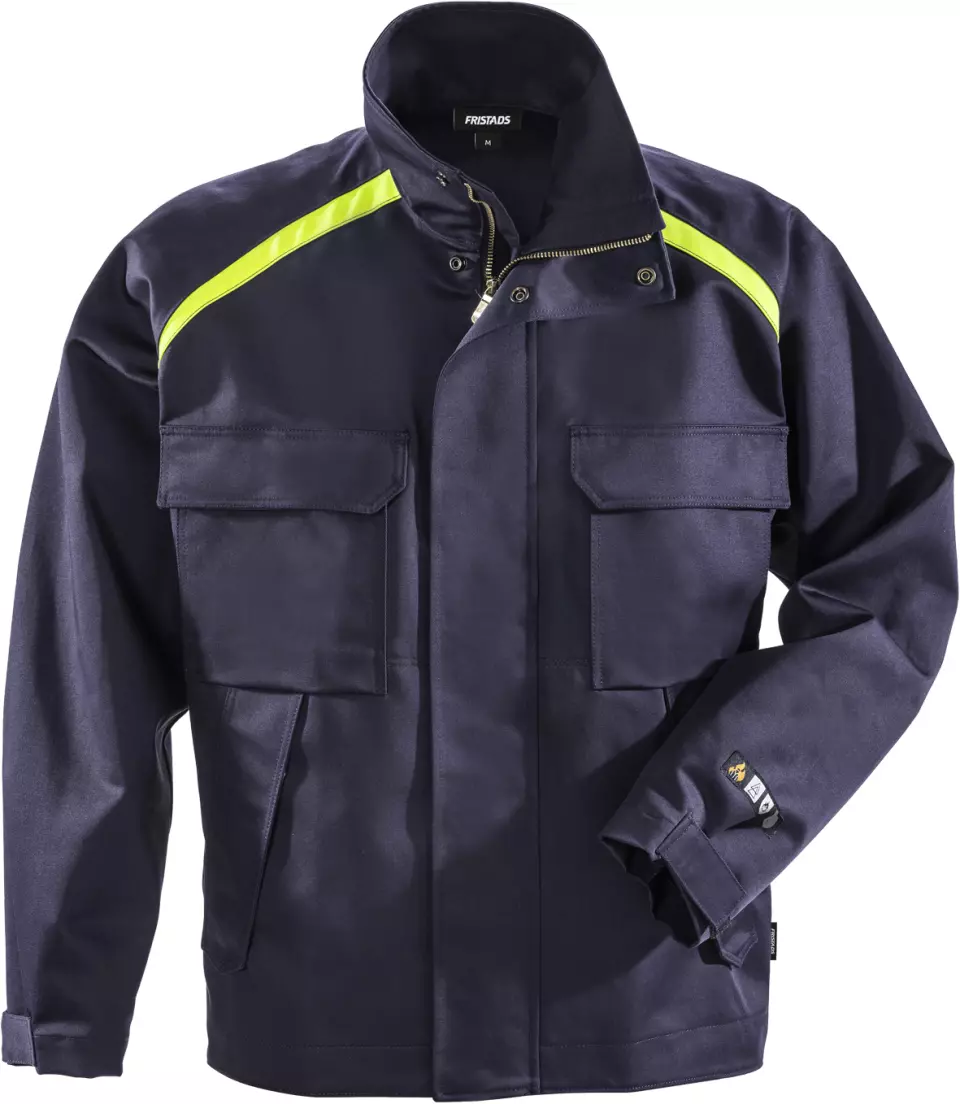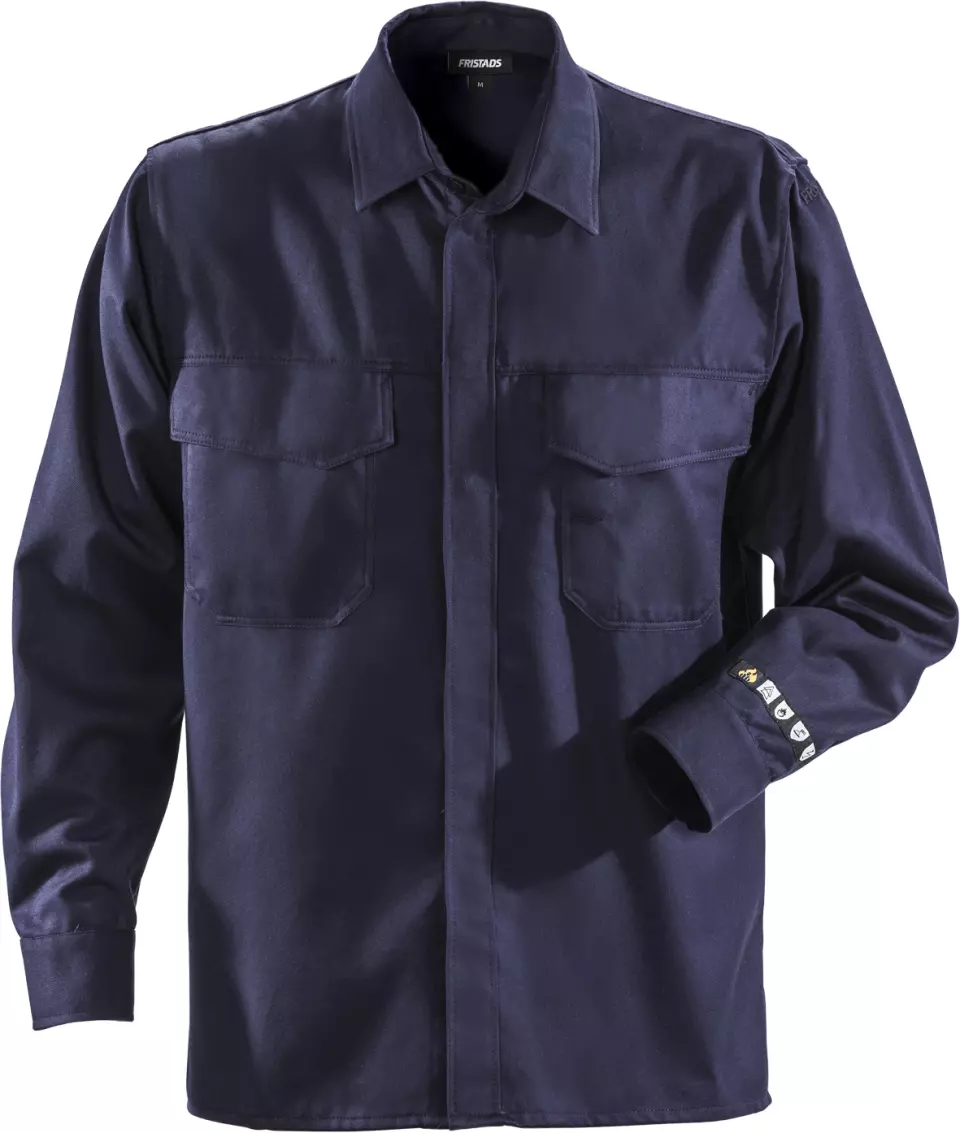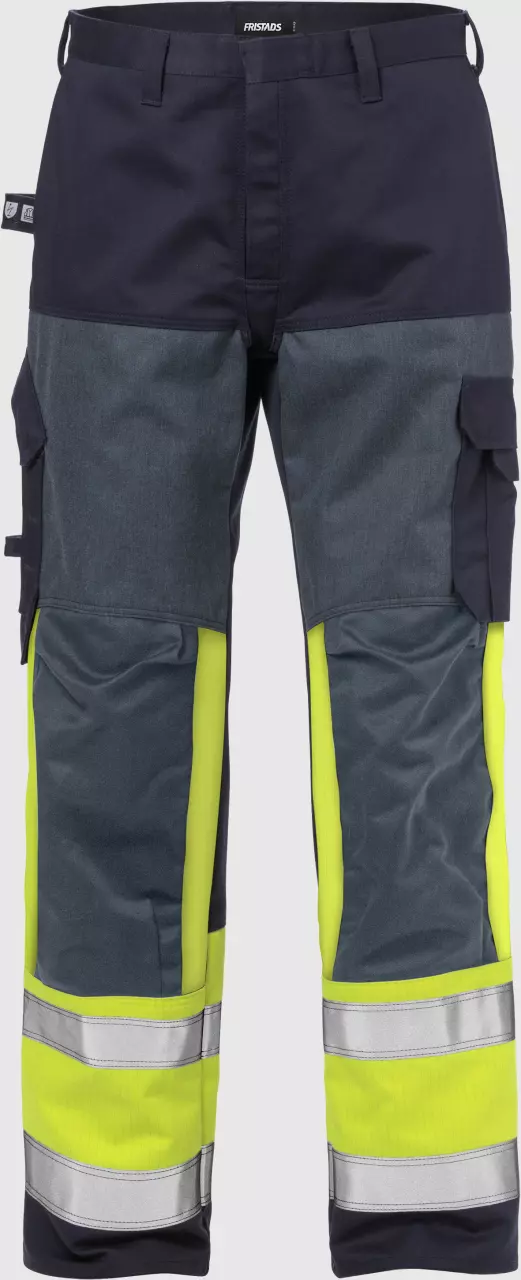

Features You'll Love

Cuff Style · Elastic
How the sleeve opening closes or fits at the wrist, affecting protection from elements and comfort during movement.

Material · Polyester, Cotton
Fristads
Flame Retardant Welding Jacket 3587 FLAM
Flame Retardant Welding Jacket 3587 FLAM
5 / 5
109,37 €
Choose size
Free delivery
Features You'll Love

Cuff Style · Elastic
How the sleeve opening closes or fits at the wrist, affecting protection from elements and comfort during movement.

Material · Polyester, Cotton
Product description
Flame-retardant welding jacket that provides comprehensive protection against arc, heat and fire risks. The jacket is made from a cotton-polyester blend with antistatic fiber and reinforced with para-aramid in exposed areas. Certified to multiple safety standards and meets requirements after 50 wash cycles.
Product features:
- Velcro fastening at neck
- Tape fastening at back
- Para-aramid reinforcements on front and sleeves
- Elastic cuffs
- Approvals after 50 washes
Technical specifications:
- Material composition: 75% cotton, 24% polyester, 1% antistatic fiber
- Reinforcement: 74% cotton, 25% para-aramid, 1% antistatic fiber
- Weight: 365 g/m², reinforcements 340 g/m²
- Tested according to industrial washing standard ISO 15797
- ÖKO-TEX® certified
Recommended applications:
- Approved for welding
- Multinorm applications
- Reinforced in exposed areas
Standards:
- EN 61482-1-2 APC 1
- EN 61482-1-1 ELIM: 8 cal/cm²
- EN ISO 11612 A1 B1 C1 E2, F1
- EN ISO 11611 A1 class 1
- EN 1149-5
- ÖKO-TEX® PPE
- PRO mark


